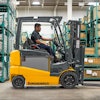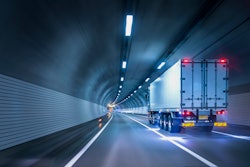
Whether it’s figuring out what’s for dinner or staying in touch with friends, millennials are known for preferring online options to their real-world analogs. However, this digitally savvy generation represents a powerful demographic when it comes to offline customer experiences. For all the doom-and-gloom predictions about the death of brick-and-mortar retail, it still comprises more than 90 percent of total retail sales. That said, e-commerce is expected to grow between 8 to 12 percent in 2017, while brick-and-mortar retail is expected to grow at just 2.8 percent.
To survive in this new era, traditional retailers have to adapt. Physical retail bankruptcies are on the rise and 2017 has the highest number of bankruptcies recorded. The companies facing the most drastic impact are large department stores—J.C. Penney, Kmart, Macy's and Sears are all closing stores this year.
At the same time, many successful online brands are moving into brick and mortar. They are expanding omnichannel e-commerce experiences with physical shopping experiences in order to strengthen their relationships with customers and provide greater flexibility—a trend being terms as from clicks to bricks. Amazon, Bonobos, Warby Parker, Athleta, Modcloth, Casper, Blue Nile and JustFab are all examples of this trend. Clearly, these companies would not open physical stores if offline commerce was dead. Rather, they have excelled at differentiating themselves by creating experiences that bring the best aspects of online and offline shopping together.
Starbucks, Uber, Amazon, Oh My!
Millennials spend five hours a day on their smartphones and 90 percent use their smartphones in store while they are shopping, including 10 percent who actually make purchases in the Amazon app while in a physical store. These statistics make it clear that leveraging mobile devices is absolutely essential to stay alive today.
Take Uber, which was one of the first companies to recognize how mobile devices could move physical commerce to the cloud. The service itself is offline—drivers take customers from Point A to B—but everything else (the estimated time of arrival, mapping, distance, user profile, time-of-day pricing, local pricing, type-of-car pricing, payment options, tolls/taxes, promos, split fare, ride shares, digital receipts and more) happens in the cloud. Every one of those capabilities enhances the taxi experience, giving Uber a huge leg up over traditional cab companies.
Or look at the Starbucks app, which processes 10 million transactions a month. One in four Starbucks sales now comes in via mobile. Like Uber, Starbucks leverages mobile devices and the cloud to deliver added value to customers who are engaging in an offline experience—getting coffee. The app offers favorites, customizations, loyalty tracking, reward redemption, payments, digital receipts, prepaid top ups, gift cards, time-of-day offers and the ability to order ahead, which gives customers the convenience of skipping the line.
Because they go everywhere with customers, mobile devices bring online experiences into physical stores. Uber and Starbucks exemplify the types of omnichannel experiences that companies must deliver to thrive in today’s market and build relationships with shoppers who are digital natives. However, it’s not enough to offer payment within a branded app. As explored above, retail apps have to add value to the in-person shopping experience.
One way is through hyper-personalized shopping. Seventy-nine percent of millennial shoppers said they can be incentivized into increasing purchases with personalized offers. Because mobile devices are able to collect huge amounts of data about their owners, they enable an unprecedented level of personalization, including in-store product bundles, personalized pricing, information and peer reviews. Personalization helps customers make smarter buying decisions, while helping brands upsell, close deals and gain insights into how customers move through physical stores.
Another opportunity is an omnichannel shopping cart, which bundles in-store, online and virtual transactions. Millennial customers tend to move back and forth between online and offline platforms. They frequently look products up online and buy it in store, and vice versa. Omnichannel shopping carts suit this behavior. And retailers benefit from the ability to warehouse long-tail products and reduce their physical store footprint. Furthermore, mobile devices allow brands to implement tender steering to minimize transaction costs by encouraging shoppers to use payment instruments with lower fees. In addition, streamlining of financial operations, such as instant issuance of cards, splitting tenders in real time or applying for credit lines become frictionless through just a tap on the shopper’s mobile screen.
Finally, retailers can use mobile devices to deliver a completely new experience that we termed augmented contextual commerce. Apps on mobile devices can be enabled to convert any surface into a point of commerce. This allows the advanced logistics and supply chain in the background to take over and get goods to shoppers through the quickest channel possible. As an extension, it also monetizes advertisements and drives sales by making it possible to scan and buy from an ad, or complete self-checkout on the shopper’s mobile device while in a store.
The benefits of leveraging mobile devices to create omnichannel experiences are too big to ignore. For physical retailers that want to survive in the years to come, it’s time to start thinking creatively about how new technologies can enhance and add value to brick-and-mortar shopping experiences.

















